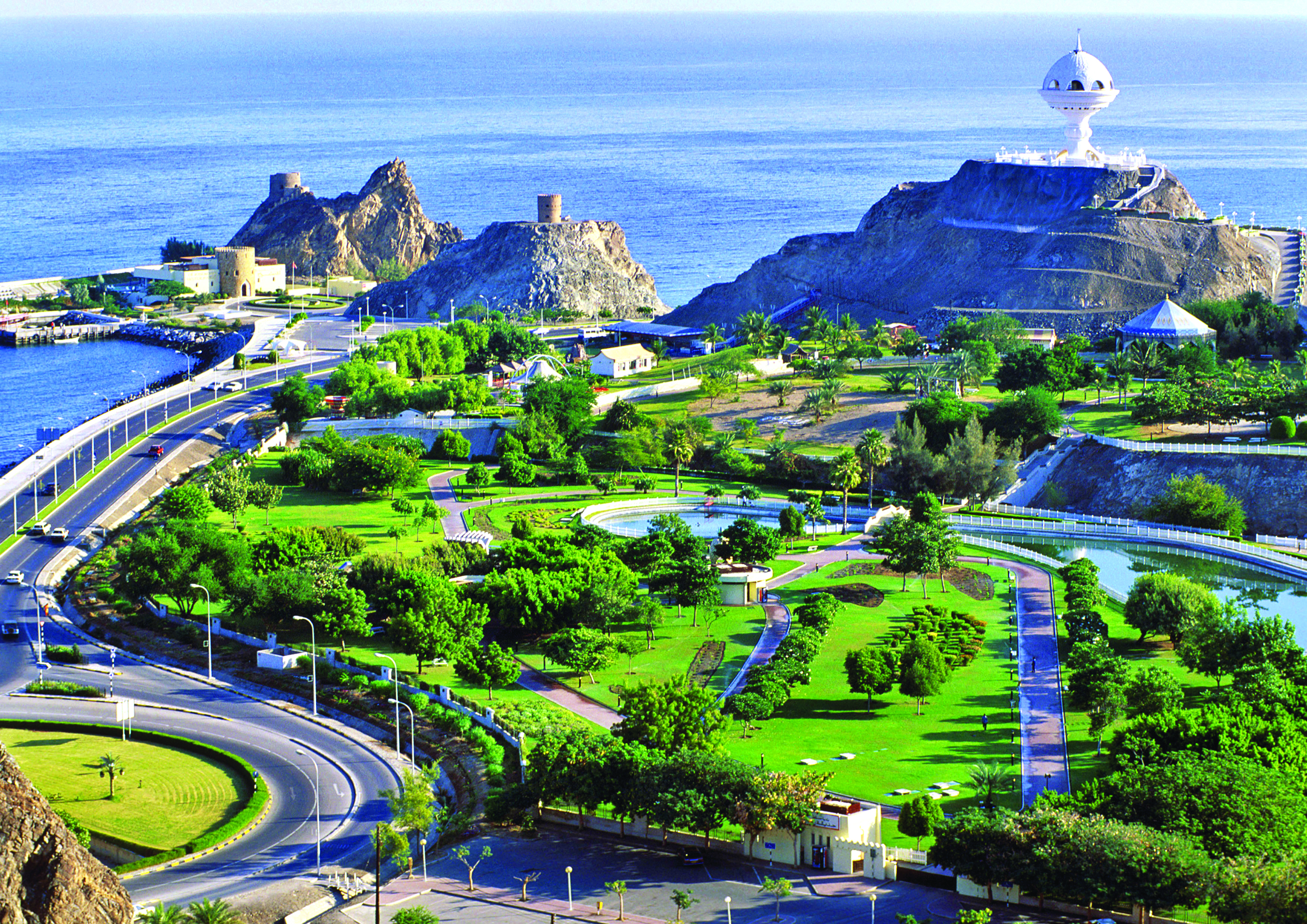Part II of our special feature on the lovely pastel colours spread across the tiny desert nation that bleeds every shade of the painter’s palette.
If you imagined the dominant colour in Oman to be sand-dune brown, prepare to be surprised. Layer by beautiful layer, you’ll discover cool green, bright blue, and warm orange hues in this compact desert nation.
Green: Watching the Turtles Nest and Rest
The beaches of Oman shelter thousands of turtles. Watching them nest and hatch is an experience of a lifetime. Located at the headland of the Arabian Peninsula, Ras Al Jinz Turtle Reserve houses one of the largest nesting areas for Green Turtles in the Indian Ocean. These sea turtles migrate annually from the shores of the Arabian Gulf, the Red Sea and Somalia to lay their eggs on the Sultanate’s shores.
Oman has five of the seven species of sea turtles. Among these, the Green Turtle is found on most Omani beaches and is plentiful in Ras Al Hadd, Ras Al Jinz, Masirah Island and Ad Daymaniyat Islands. The Olive Ridley Turtle nests only on Masirah Island. In the darkness of the night, it is fascinating to watch these turtles, carrying their heavy shells on their backs, drag themselves out of the water to the beach, and with great difficulty, dig a hole in the sand using the tips of their paws so as to bury their eggs and then return to the sea. After about 55 days, the eggs hatch and baby turtles come out to start the most dangerous journey of their lives, trying to avoid hungry foxes, crabs and birds as they push their way towards the sea where they can find safety in the waters. Watching the turtles’ night dash to the sea is among the most popular tourist activities, conducted under the guidance and supervision of the Turtle Reserve’s specialists.
Oman has a wealth of exotic marine life, vast stretches of coral reef and some of the best dive sites in the world. A scuba-diving or snorkelling trip in these waters is incredibly thrilling. Some of the most beautiful coral reef sites of Oman are located in the Muscat area, Daymaniyat Islands, Bandar Jissah, Bandar Khayran, Fahal Islands, Sharqiya, Barr al Hikman, Masirah Islands, Dhofar, Musandam and Marbadh.
Blue: Dip Into the Azure Waters of the Wadis
Indigenous to Oman are wadis, natural swimming pools created by rainwater. These wadis form an integral part of the country’s ecosystem. Among the most pristine is Wadi Bani Khalid, approximately 200 km from Muscat, which is always full of water. Local Omanis often come for day trips here, to swim with their families and enjoy with friends. Adventure lovers can follow the riverbed on a journey lasting three days and two nights all the way to Wadi Tiwi, which opens up among lush palm groves. Wadi Shab is also perfect for combining an excursion in the mountains with a camping holiday on the beach.
Besides its desert landscape, Oman boasts some of the most natural and pristine beaches in the world. The Sea of Oman, the Arabian Sea and the Strait of Hormuz lend the nation a long coastline. The pristine shores have smooth and sandy beaches where you can dip your toes or swim in the crystal clear blue waters. Some of the best beaches include Finns Beach, Ras Al Hadd, Al Sawadi, Bandar Al Jissah and Yiti Beach.
Oman is a sailor’s delight as it houses several world-class yachts, cruises and a stunning marina. Hundreds of dolphins jump in the air acrobatically and swim in the blue waters. Watching them frolic in the sea is an unforgettable experience.
Orange: Grand Canyon of the Middle East
Enveloped by majestic mountains and vast swathes of desert, Oman is a land of immense beauty. Nicknamed the ‘Grand Canyon of Arabia,’ Jabal Shams – Oman’s highest mountain (3,005 metres) enjoys pleasant weather. If you’re lucky, you can even catch snow in the mountains during the winters. Trek, hike or just spend hours gazing at the canyon which has a vertical drop of 2,100 metres from the summit to the base.
Honey, russet, sorrel, chestnut, sienna, copper, ochre, amber, brown or simple orange – pick any shade from the palette and you might just find it in Sharqiyah Sands, Oman’s longitudinal dunes that sprawl 200 km long and 100 km wide. The ever-changing patterns of the dunes are a photographer’s delight. Bedouin camps are dotted along the tracks and trails of this desert and you can visit their homes to understand the culture of the Bedouin life. Exciting activities such as sand boarding, dune bashing, quad biking, and camel safari will keep you engaged for hours, even days. The rest of the time, relax at the desert resorts amidst luxury and tranquillity.
HOW TO REACH?
The flight time from most Indian cities to the Sultanate of Oman is under three hours. Oman’s national carrier Oman Air has a strong presence in India, with several flights to the capital city Muscat.





















